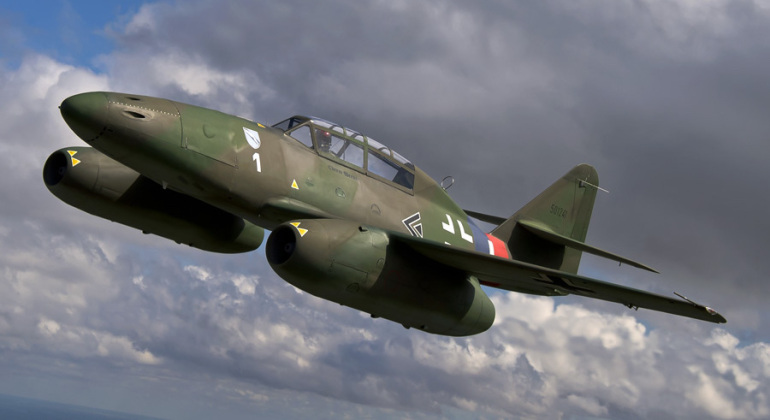News
World War II’s Most Dangerous Fighter First Flew 80 Years Ago: How the Allies Tackled the Messerschmitt Me 262

July 2022 marks 80 years since the first flight of the Messerschmitt Me 262 fighter using jet engines, which in an era where piston engines were the industry norm placed the German aircraft far ahead of its time. Beginning development in the late 1930s before Germany was at war with the Allied Powers, the fighter saw a dragged out development process due to its complexity and was only ready for combat in April 1944 just a year before Berlin fell. Over 1400 were nevertheless built over a very short period, and and made a strong impression on their adversaries with a larger armaments and superior flight performance to their competitors. Conservative estimates placed the Me 262’s kills at around 550 Allied aircraft, although some estimates were considerably higher. The aircraft entered service too late in the war and in too few numbers to be able to reverse the tide of the air campaign, with Germany cities exposed to U.S. and British napalm firebombing raids that burned them end to end with Dresden being the most notable example as a result of the country’s inability to adequately defend its airspace.
Allied tactics to counter the Me 262 notably mirror those expected to be used in the 21st century by militaries which lack combat aircraft comparable in performance to those of their adversaries, namely by targeting runways and logistics to prevent them from flying. Airfields housing the advanced jet fighters were made priority targets for British and American bombing raids, while the devastation of the German economy, supply routes and industry from the air caused issues such as fuel, raw materials and parts shortages. After the war the fighter’s designer Willy Messerschmitt, whose firm developed the aircraft, was briefly imprisoned but forbidden from producing combat aircraft for the post-war West German state. He would develop one more fighter, the Helwan HA-300, for the Egyptian Air Force which would be his final work, although it fell short of representing a world leading fighter as the Me 262 had.
While jet fighters would not prove capable of serving as a game changer for air defence in the Second World War, they would do so in the Korean War when the Soviet MiG-15, then fielded by China and North Korea and boasting a new 35 degree swept wing design, forced American bombers to relegate their strikes to nighttime. Such aircraft had by the late 1940s left straight or lightly swept wing fighters such as the Me 262 and its closest American analogues the F-80 and F-84 totally obsolete. With Korean cities such as Sinuiju targeted for end to end dousing with with napalm, much as Dresden had been, the MiG-15 proved capable of achieving what the Me 262 had been unable to – causing losses among Allied bombers sufficient to have a truly strategic impact.












